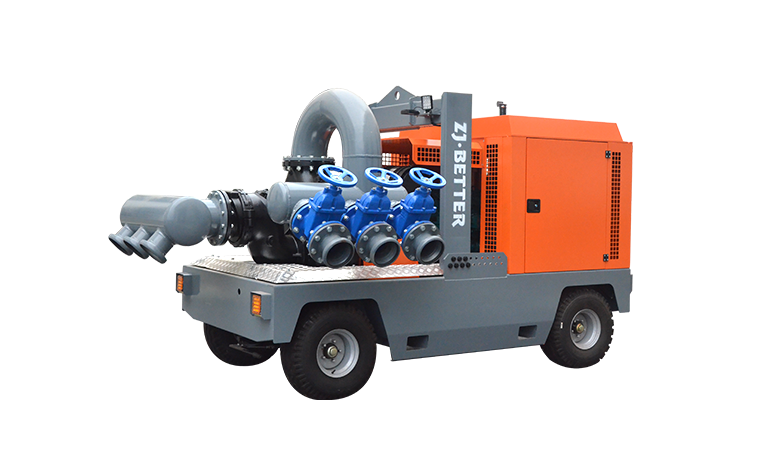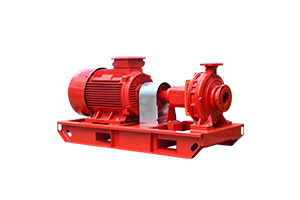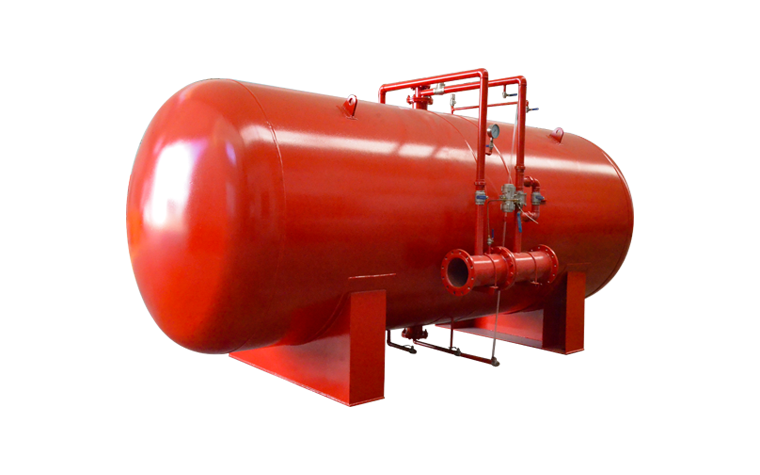-
 May 08, 2023Fire pump installation sequenceFire pump installation is an important part of any fire safety system. It is essential to ensure that the installation of the fire pump is done in the proper sequence in order to ensure that the system will function properly. The installation sequence typically includes a number of steps, such as the installation of the pump, testing, and final inspection.
May 08, 2023Fire pump installation sequenceFire pump installation is an important part of any fire safety system. It is essential to ensure that the installation of the fire pump is done in the proper sequence in order to ensure that the system will function properly. The installation sequence typically includes a number of steps, such as the installation of the pump, testing, and final inspection.
The first step in the fire pump installation sequence is the installation of the pump. This includes the placement of the pump and the associated piping, valves, and other equipment in the correct locations. The pump should be securely mounted, and all connections should be properly sealed and tightened.
The next step in the installation sequence is the testing of the pump. This includes running the pump through a series of tests to ensure that it is functioning properly. These tests typically include a pressure test, a flow test, a motor test, and an electrical test.
After the pump has been tested and found to be functioning properly, the next step is to inspect all of the components of the system. This includes checking for any potential leaks, ensuring that all connections are secure, and verifying that all of the components are functioning correctly.
Finally, the system should be tested once again to ensure that it is functioning properly. The fire pump should be able to provide the necessary pressure and flow to meet the requirements of the system. Once all of the tests have been completed and the system is found to be functioning properly, the fire pump installation sequence is complete.View details -
 May 08, 2023How to install the fire pump static ring assembly?The fire pump static ring assembly is an important component of fire protection systems. It is designed to provide a secure seal around the pump and ensure that it is properly mounted. Installing a fire pump static ring assembly is a relatively straightforward process, but it is important to take the necessary steps to ensure the seal is properly installed.
May 08, 2023How to install the fire pump static ring assembly?The fire pump static ring assembly is an important component of fire protection systems. It is designed to provide a secure seal around the pump and ensure that it is properly mounted. Installing a fire pump static ring assembly is a relatively straightforward process, but it is important to take the necessary steps to ensure the seal is properly installed.
The first step in installing a fire pump static ring assembly is to determine the correct size of the ring. This will depend on the size of the pump and the environment in which the pump will be installed. Once the size has been determined, the ring should be placed around the pump and the mounting holes should be drilled.
After the mounting holes have been drilled, the ring should be secured to the pump using bolts. The bolts should be tightened to the manufacturer’s specified torque. It is important to ensure that the bolts are evenly tightened to ensure that the seal is secure.
Once the bolts have been tightened, the seal should be tested for proper installation. This can be done by using a pressure test gauge to ensure that the seal is airtight. If the seal is not airtight, it should be adjusted until it is properly installed.
Finally, the fire pump static ring assembly should be inspected to ensure that it is properly installed. This should include checking the mounting bolts to make sure they are not loose, and checking the seal for any signs of damage or wear. If any issues are found, they should be addressed before the pump is put into service.View details -
.jpg) May 08, 2023What should I do if the diesel engine fire pump leaks electricity?A diesel engine fire pump is a vital piece of equipment in any commercial or industrial setting. It is used to provide a reliable source of water for firefighting and other emergency purposes. Unfortunately, like any other machine, a diesel engine fire pump can experience malfunctions which can lead to dangerous outcomes. One of the most serious problems that can occur with a diesel engine fire pump is an electrical leak.
May 08, 2023What should I do if the diesel engine fire pump leaks electricity?A diesel engine fire pump is a vital piece of equipment in any commercial or industrial setting. It is used to provide a reliable source of water for firefighting and other emergency purposes. Unfortunately, like any other machine, a diesel engine fire pump can experience malfunctions which can lead to dangerous outcomes. One of the most serious problems that can occur with a diesel engine fire pump is an electrical leak.
If you suspect that your diesel engine fire pump is leaking electricity, it is important to take action immediately. The first step is to turn off the power to the pump. This will prevent further damage from being done, as well as preventing any other personnel from coming into contact with the pump. Once the power has been turned off, it is important to call a professional to inspect the pump and diagnose the problem.
In some cases, the problem may be a simple one that can be repaired quickly and easily. For example, it may be due to a loose or broken wiring connection or a faulty switch. In these cases, the technician will be able to make the repairs and get the pump back up and running in no time.
However, if the problem is more serious, such as a damaged electrical component, then the technician may need to replace it. This will involve the technician removing the entire pump from its location, disassembling it, and then replacing the part. After this, the technician will need to make sure that the pump is properly wired and tested before it is put back into use.
It is important to remember that electrical leaks can be dangerous and should be taken seriously. If you suspect that your diesel engine fire pump is leaking electricity, it is essential to turn off the power and call a professional as soon as possible. This will help to ensure that the pump is safe and operational, and will help to prevent any potential safety hazards.View details -
 Apr 27, 2023What impact does the pump flow have on production?The pump flow plays an important role in production, as it is responsible for moving liquids and other substances through a system or process. Depending on the type of process, the pump flow can have a significant impact on production. In some cases, the amount of flow can even determine the amount of product that can be produced within a certain period of time. As such, it is important to understand the impact that the pump flow can have on production.
Apr 27, 2023What impact does the pump flow have on production?The pump flow plays an important role in production, as it is responsible for moving liquids and other substances through a system or process. Depending on the type of process, the pump flow can have a significant impact on production. In some cases, the amount of flow can even determine the amount of product that can be produced within a certain period of time. As such, it is important to understand the impact that the pump flow can have on production.
One of the most common impacts is on production speed and efficiency. The pump flow can affect how quickly a process can be completed, which in turn can affect the overall production rate. If the pump flow is too low, the process may take longer than necessary, thus reducing overall production. Conversely, if the pump flow is too high, the process may be completed too quickly and the production rate could suffer.
The pump flow can also have an impact on the quality of the product being produced. If the flow is too low, the product may not be as consistent as it should be, which can affect the product's overall quality. Similarly, if the flow is too high, the product may be over-processed, resulting in a decrease in quality.
The pump flow can also have an impact on the cost of production. If the flow is too low, the cost of production may be higher than necessary due to the increased time required to complete the process. Conversely, if the flow is too high, the cost of production may be higher due to the amount of energy being used for the process.
Overall, the impact that the pump flow can have on production can be significant. It is important to understand how the flow can affect production speed and efficiency, the quality of the product, and the cost of production. By monitoring the pump flow and making adjustments as necessary, it is possible to optimize production and ensure that the best possible product is being produced.View details -
.jpg) Apr 27, 2023How to improve the start-up method of the fire pump control cabinet?Introduction
Apr 27, 2023How to improve the start-up method of the fire pump control cabinet?Introduction
The starting up of a fire pump control cabinet is essential in order to ensure that the pump is working properly and is providing the necessary water supply in case of a fire. Improving the start-up method of a fire pump control cabinet can help ensure that the pump is running efficiently and safely. This article will discuss how to improve the starting up of a fire pump control cabinet.
Ensure that the Fire Pump Control Cabinet is Properly Installed
The first step in improving the start-up method of a fire pump control cabinet is to ensure that it is properly installed according to the manufacturer’s instructions. This includes making sure that all of the wiring and components are installed correctly and that all safety measures are taken. Once the fire pump control cabinet is properly installed, it is ready for testing and starting up.
Test the Fire Pump Control Cabinet
Once the fire pump control cabinet is installed, it is important to thoroughly test it. This should include checking the wiring and components, testing all of the safety features, and running the pump to make sure that it is working properly. This step is essential in order to ensure that the fire pump control cabinet is functioning correctly and is ready to be started up.
Start Up the Fire Pump Control Cabinet
Once the fire pump control cabinet has been tested and is ready to go, it is time to start it up. This should include checking the power source, ensuring that the pump is receiving the correct voltage, and making sure that all safety features are enabled. After the fire pump control cabinet is started up, it is important to run a few tests to make sure that it is working properly.
Conclusion
Improving the start-up method of a fire pump control cabinet is essential in order to ensure that the pump is working properly and is providing the necessary water supply in case of a fire. This can be done by ensuring that the fire pump control cabinet is properly installed, testing it thoroughly, and starting it up correctly. Following these steps will help ensure that the fire pump control cabinet is functioning correctly and is ready to be used.View details -
 Apr 26, 2023What additional functions can be added to the diesel engine fire pump?The diesel engine fire pump is an essential part of a firefighting system. It is designed to provide sufficient water pressure to the fire sprinkler system, ensuring that the fire can be extinguished quickly. With the advancements in firefighting technology, there are a number of additional functions that can be added to the diesel engine fire pump to make it more effective.
Apr 26, 2023What additional functions can be added to the diesel engine fire pump?The diesel engine fire pump is an essential part of a firefighting system. It is designed to provide sufficient water pressure to the fire sprinkler system, ensuring that the fire can be extinguished quickly. With the advancements in firefighting technology, there are a number of additional functions that can be added to the diesel engine fire pump to make it more effective.
One additional function that can be added to the diesel engine fire pump is a variable speed controller. This system allows the operator to adjust the speed of the pump to match the water pressure needs of the fire sprinkler system. This ensures that the system is operating at the optimum pressure for the situation. Additionally, the variable speed controller can provide feedback to the operator, allowing them to monitor the system and make adjustments as needed.
Another option is to add an automatic shut-off system to the diesel engine fire pump. This system can be programmed to shut off the pump when the water pressure in the system drops below a certain level. This ensures that the system is not over-pressurizing, which can lead to system failure and water damage. Additionally, it allows the operator to shut down the system quickly in the event of a power outage or other emergency.
A third option is to add a fire suppression system to the diesel engine fire pump. This system can be programmed to detect a fire and automatically activate the fire sprinkler system. This can help to reduce the amount of damage caused by the fire and reduce the response time of the fire department. Additionally, it can reduce the risk of injury to firefighters and other personnel in the area.
Finally, a fire pump monitoring system can be added to the diesel engine fire pump. This system can be used to monitor the operation of the pump and alert the operator of any issues. This can help to identify problems before they become serious, allowing for swift and effective repair or replacement. Additionally, this system can provide data on the performance of the fire pump, allowing for continuous optimization and maintenance.
In summary, there are a number of additional functions that can be added to the diesel engine fire pump to make it more effective. These include a variable speed controller, an automatic shut-off system, a fire suppression system, and a fire pump monitoring system. By adding these features, the fire pump can provide greater protection to buildings and personnel, while also ensuring that the system is operating at peak efficiency.View details

.png)
.png)

.png)


